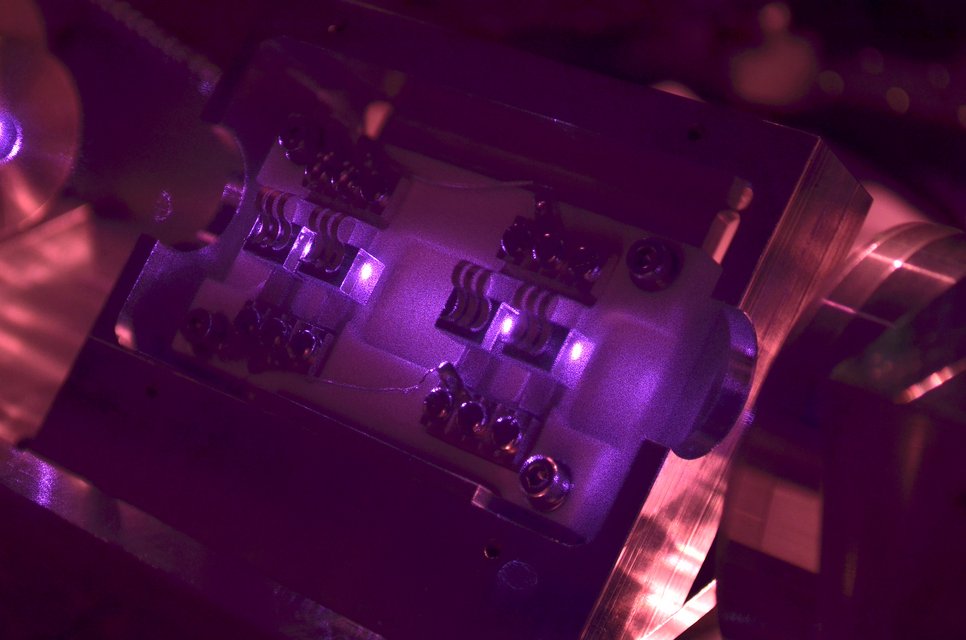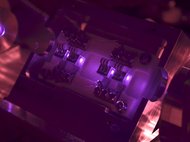April 2025
GEO600 is being upgraded to observe gravitational waves at very high frequencies.
The German-British gravitational-wave detector GEO600 near Hannover, Germany, has tested and developed many of the technologies that are now used in current ground-based large gravitational-wave detectors. Now, GEO600 researchers will take their detector to the next level. Their goal is to search for gravitational waves at frequencies much higher than those observed by current instruments and to deepen our understanding of dark matter and the early Universe.

By upgrading GEO600 for superior sensitivity to gravitational waves at very high frequencies (hundreds of thousands of hertz to a million hertz), much higher than those observed by current instruments, a new part of the gravitational-wave spectrum will become accessible.
Until now, there have been no instruments sensitive to these high-frequency waves. This is a step into uncharted territory and a realm of new gravitational-wave sources. By searching for high-frequency gravitational waves, GEO600 scientists aim to look for signals that no one has been able to look for before.
The laser source at GEO600, which served as a “blueprint” for the laser systems used in gravitational-wave detectors worldwide will be upgraded. A new laser amplifier has been installed that will provide up to 70 watts of laser power to the detector and increase its measurement precision.
Additionally, the data acquisition system at GEO600 has been upgraded with new components. These take measurement data 4 million times each second to enable the observation of high-frequency gravitational waves.

